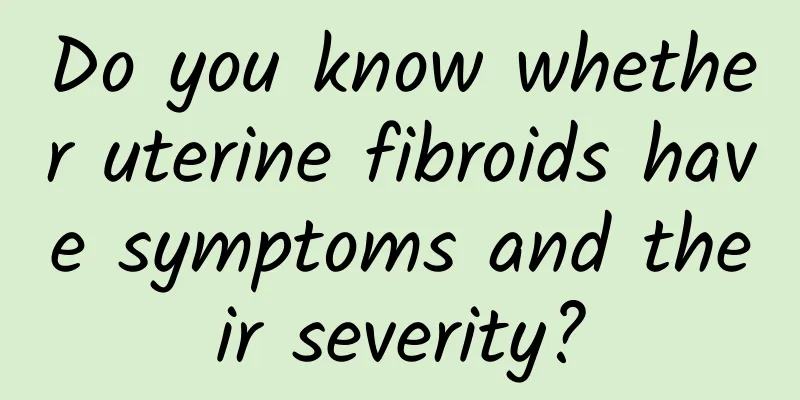Do you know whether uterine fibroids have symptoms and their severity?

|
Whether uterine fibroids have symptoms and their severity are mainly determined by the location, size, number and complications of the fibroids. Do you know the symptoms of uterine fibroids? Don't worry, let our experts briefly introduce the symptoms of uterine fibroids to you, hoping to help you! Symptoms of uterine fibroids experts introduce to you: Clinically, we also see that some patients have small intramyomas, and the endometrial pathology report of curettage shows secretory endometrium, but there are bleeding symptoms, or some patients with subserosal uterine fibroids also have uterine bleeding symptoms. These are difficult to explain by enlarged endometrial area, poor uterine contractions, or dysfunctional uterine bleeding, and the increasingly important concept of congestion and dilation of the endometrial venous plexus is quite convincing. The idea is that there are rich blood vessels distributed in the subserosa, intramural and endometrium of the uterus. Whether the fibroids grow under the mucosa, intramural or subserosa, they may compress the veins near the tumor, causing congestion and dilation of the endometrial venous plexus, thereby causing menorrhagia. The most prominent clinical symptom of submucosal uterine fibroids is uterine bleeding. Some people believe that the bleeding is caused by ulcers on the surface of the fibroids. However, submucosal fibroids with ulcers are rare, while abnormal bleeding is common. Therefore, it is more effective to explain it by congestion and dilation of the endometrial venous plexus. Sometimes, the rupture and bleeding of the enlarged veins on the surface of the submucosal fibroids of the uterus can directly lead to heavy bleeding. The above explanations are all reasonable and not contradictory. Combined with the specific patient, the cause of uterine bleeding may be mainly due to one factor or the result of the synergistic effect of several factors. In recent years, it has been believed that the regulation disorder of growth factors or their receptors such as basic fibroblast growth factor (bFGF), vascular endothelial growth factor (VEGF), epidermal growth factor (EGF) produced by uterine fibroids and muscle wall tissue has a direct impact on vascular function and generation, causing abnormal uterine vascular structure and leading to excessive menstruation. The above is a brief introduction of the symptoms of uterine fibroids by experts. Do you know them? If you have any questions about uterine fibroids, please consult our online experts. We will serve you wholeheartedly! Uterine fibroids: http://www..com.cn/fuke/zgjl/ |
<<: Women's health starts with paying attention to the ovaries
>>: Daily care of vulvar leukoplakia
Recommend
Can I eat vinegar if I have adenomyosis?
Can adenomyosis cause jealousy? 1. Patients with ...
How much does it cost to check for cervical warts?
After being infected with cervical warts, many pa...
Is ovarian cyst easy to treat?
Is cystic ovarian cyst easy to treat? Medically, ...
Save 640,000 obese schoolchildren: Eat more fruits and vegetables to lose weight and prevent cancer
Being fat as a child is not a blessing! Studies h...
What are the precautions for patients with congenital absence of vagina?
What are the precautions for patients with congen...
Suffering from uterine fibroids will cause some compression symptoms
Suffering from uterine fibroids will cause some c...
Only by eating the right starch can you lose weight! Sweet potato, corn and oats are super effective
There are many different ways to lose weight, and...
What are the dangers of cervical hypertrophy?
Cervical hypertrophy is one of the more common gy...
Obesity and sagging skin not only affect appearance, but these health problems can also raise red flags!
Obesity and excess skin are common health issues ...
Causes of uterine fluid accumulation in women
What causes uterine effusion in women? Uterine ef...
Can vaginitis be cured?
Can vaginitis be cured? Vaginitis is the most com...
What to do if Bartholinitis often occurs
Bartholinitis is an uncommon gynecological diseas...
How to treat severe adnexitis?
How to treat severe adnexitis? Severe adnexitis m...
Will uterine fibroids shrink after pregnancy?
The uterus is the cradle of life, but it is fragi...
What to eat to treat irregular menstruation
Patients with irregular menstruation often experi...









